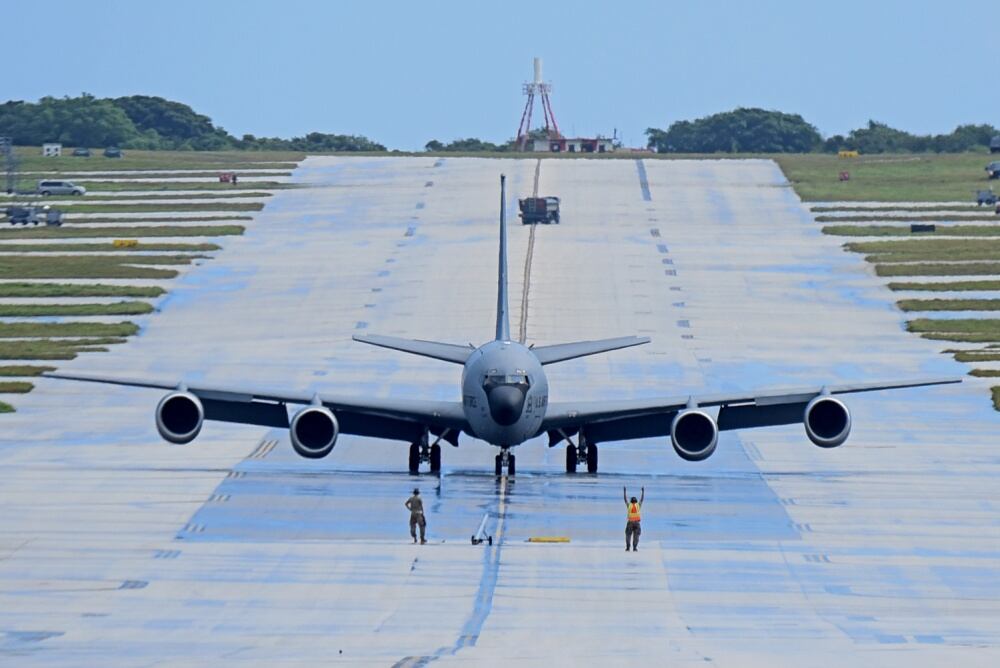The U.S. invited the Royal Australian Air Force to lead a major humanitarian training exercise for the first time as part of an annual Pacific Air Forces training exercise.
Cope North 2020 united the U.S. Air Force, Royal Australian Air Forces and the Japan Air Self-Defense Force in a 17-day-long simulation, Feb. 12-28, to test how well the three nations’ air forces work together, the Air Force said in a release.
In one part of the exercise, the three nations teamed up for a large combat air forces exercise on Guam and around the Commonwealth of the Northern Mariana Islands and the Federated States of Micronesia, including Palau and Yap. In the other major part of the exercise, the three nations took part in disaster relief training to improve their interoperability. More than 100 aircraft from 21 units, including more than 2,000 personnel, took part.
“This was a historic Cope North exercise,” said U.S. Air Force Col. Scott Rowe, director of the Cope North 2020 exercise. “Instead of individualizing control groups nationally, we performed as a multinational joint task force and integrated the three nations along functional lines.”
The humanitarian and disaster relief exercise taught personnel to prepare for and recover from natural disasters through the development of airborne command and control.
As part of the HADR exercise, the air forces simulated the aftermath of an earthquake measuring 7.3 on the Richter scale that ravaged the Northern Mariana Islands and caused tsunamis. Expeditionary forces deployed to Tinian and Rota, part of the Northern Mariana Islands, to provide airlift and medical support, and set up the security and command and control operations necessary for a disaster relief operation. They also had to set up an airfield in an austere environment that could make sure air operations took place safely and effectively.
U.S., Japanese and Australian airmen worked together to perform medical evacuations, airfield security, command and control, search and rescue, and cargo and personnel airlifts in response to the earthquake scenario on the two islands. They also set up tents for shelter and food and water storage, and responded to scenarios in real-time to test their readiness, the Air Force release said.
For example, the exercise simulated severe damage to the infrastructure on Tinian and water contamination that caused dozens of simulated cases of mild to intense poisoning, including some deaths, and strained the capacity of the local health care facility. With local authorities stretched to their limit in this scenario, the three nations’ medical personnel were brought in to treat patients and prevent further deaths and quell public unrest.
“The [Air Force’s] decision to invite Australia to lead the HADR component of Cope North 2020 for the first time is a reflection of their deep respect and confidence in the Royal Australian Air Force’s ability to lead and plan a major tri-nation exercise in a professional, credible and safe manner,” said RAAF Group Captain Mark Larter.
The training scenario for Cope North 2020 involved a medical evacuation from Rota to Guam, providing troops the opportunity to provide disaster relief and ensure air operations were executed safely and efficiently.
“Operating cohesively alongside our Australian and Japanese allies allows us to understand one another’s capabilities and strengths,” said U.S. Air Force Staff Sgt. Shaquielle Sheppard. “This training has solidified what we can accomplish together and what we can bring to the fight.”
Olivia is a reporting Intern for Military Times, and a junior Communication student at George Mason University.





